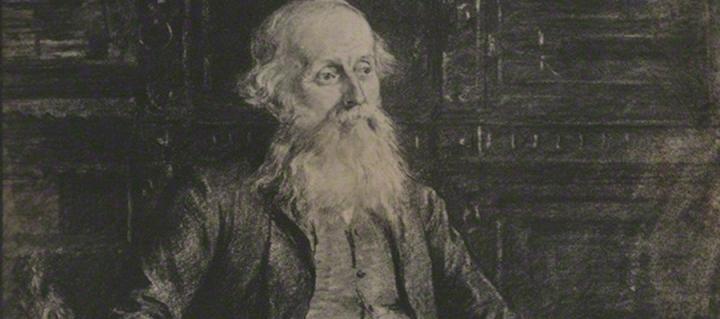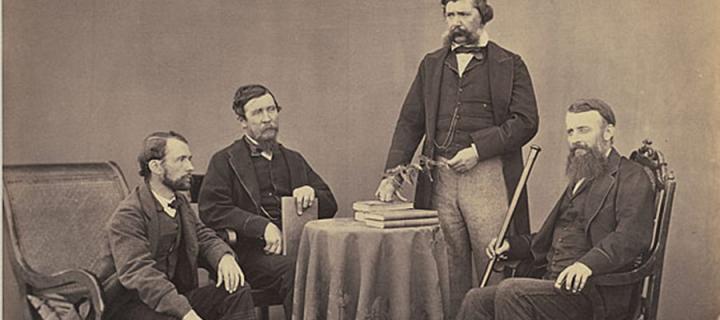Dr Hugh Cleghorn (1820 – 1895)
Madras-born Scottish physician, pioneering botanist and forest conservationist in India.

Born in Madras, India, in 1820, Hugh Cleghorn was the son of Peter Cleghorn, Registrar and Prothonotary in the Supreme Court of the Madras Presidency, and the grandson of Sir Hugh Cleghorn, the first colonial secretary to Ceylon.
Hugh’s mother died in 1824 when he was 4 years old and two years later the family returned to Scotland where Hugh attended the High School in Edinburgh, the University of St Andrews and finally the University of Edinburgh. He qualified MD in 1841 after having apprenticed under the famous surgeon James Syme.
In sickness and in health
Cleghorn first served in India as an assistant surgeon employed by the East India Company at the Madras General Hospital, then Mysore Commission. It was at the Commission that he developed a keen interest in botany and became involved with forest conservation in Mysore.
In 1848 he contracted Mysore fever
and convalesced back in Britain where he continued his private botany studies. He returned to India in 1852 when he was appointed Professor of Botany and Materia Medica at Madras Medical College.
During his sick leave he gave several speeches about the failure of agriculture in India and, having made an impression on the Indian administration, was asked to organise the Madras Forest Department. In 1856 he was appointed Conservator of Forests in Madras Presidency.
Father of scientific forestry
His time at the Madras Forest Department was extremely successful and led to further influence and prominence. In 1861 he was asked to extend operations into the Pubjab, between 1860 and 1862 he investigated forest matters in a number of regions including the North-Western Himalayas, and he assisted Dietrich Brandis, the father of tropical forestry, in the application of German forestry ideas in Bengal.
He was made Joint Commissioner for Conservancy of Forests, a position shared with Dietrich Brandis, followed by Inspector-General of Forests in 1867.
Application of research

Cleghorn’s studies in botany were practically minded and addressed concerns that ranged from the growth of the railways to the influence of forests on the climate.
He published extensively throughout his time in India, including research on the hedge plants of India and Hortus Madraspatensis, a catalogue of the plants grown in the garden of the Agri-Horticultural Society in Madras. His research and campaigning also led to changes in policy including the he banning of kumri
, a form of shifting cultivation in the Madras Presidency in 1860.
Botanical legacy
Huge Cleghorn left India in 1869 but stayed involved as an advisor to the Secretary of State for India and helped in the selection of candidates for the Indian Forestry Service.
Back in Scotland, he was elected president of the Edinburgh Botanical Society in 1868 and the Scottish Arboricultural Society in 1872. He was also instrumental in the establishment of a lectureship in Forestry at the University.
He died at Stravithie Castle, Fife, on 16 May 1895. Cleghornia, a genus of plants in the dogbane family, commemorates Dr Hugh Cleghorn, the father of scientific forestry in India
.
Alumni connection
After Cleghorn’s death his outstanding collection of drawings, and books relating to forestry and botany, was divided between the University of Edinburgh, which received 300 items on forestry, land use and botany, and what became the National Museum of Scotland. The latter share was transferred to the Royal Botanic Garden Edinburgh (RBGE) in 1940, whereupon it was reunited with his substantial Indian herbarium that had been given in 1896.
Alumnus Henry J. Noltie has explored Cleghorn’s significance for RBGE in two publications that are featured in July's alumni bookshelf.

